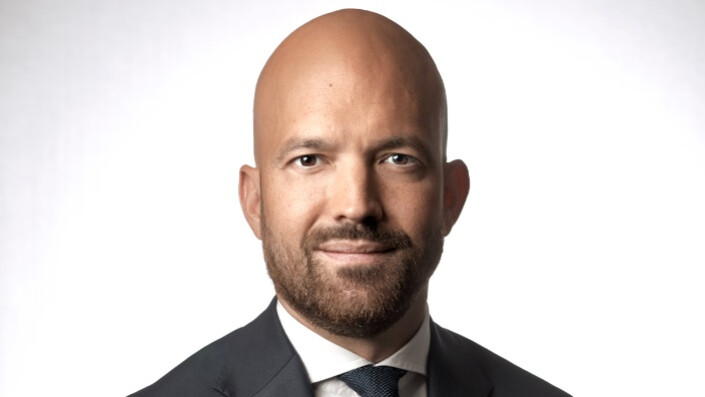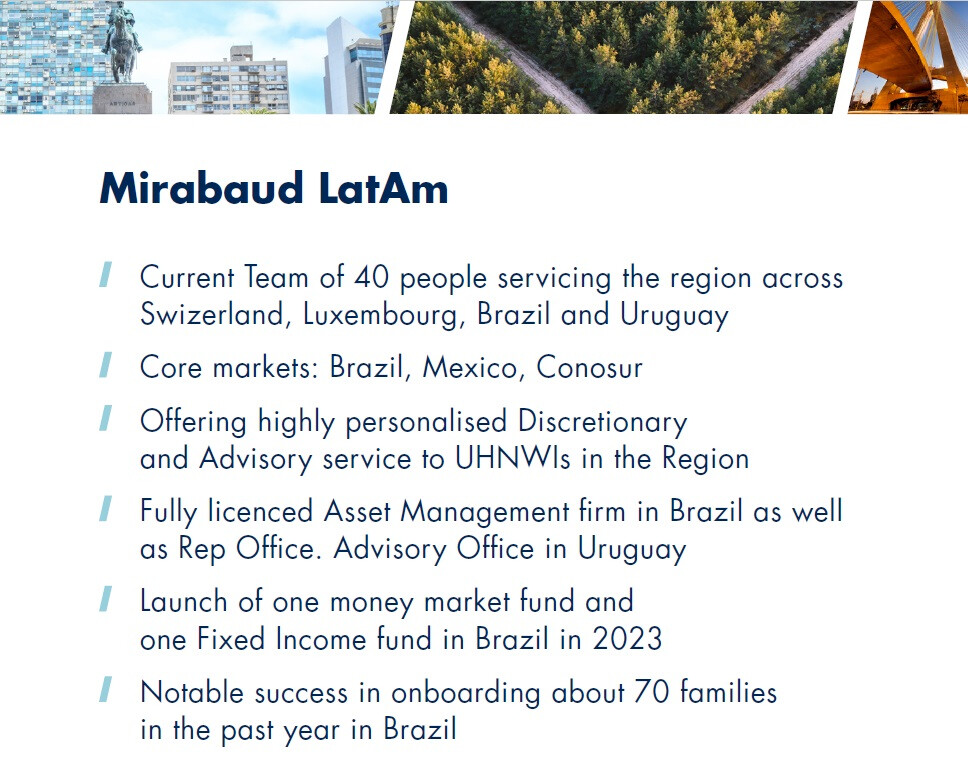Interview with Thiago Frazao, Equity Partner and Head of LatAm at Mirabaud
Thiago Frazao, Mirabaud Equity Partner and Head of Latam, reveals where rich Latin Americans are investing their money...

LatAm INVESTOR: Please give us a profile of Mirabaud.
Thiago Frazao: Mirabaud is a 204-year-old financial institution, a privately-held bank run by the seventh generation of members of the Mirabaud family and non-family partners. It began as a merchant bank in Switzerland before spreading across Europe. It diversified into asset management in the 1970s, starting out with alternatives and then evolving to include fixed income, publicly listed equities and private equity. It has 700 employees that are present across 10 countries, in 14 offices with $36billion of assets between the bank and asset management. It also offers corporate advisory to help small and mid-sized companies raise debt in primary or secondary capital markets.
Latin America evolved over time as a significant market for us. Today our Latin American team employs roughly 40 people in Switzerland, Luxembourg, Brazil and Uruguay. Our three main markets in the region are Brazil, Argentina and Mexico. We began with Argentina about 15 years ago and during that time our Latin American business has grown organically to reach $4billion of assets under management today. So now Latin America is one of Mirabaud’s core markets. We understand it well and have the expertise and experience from a regulatory perspective. Brazil and Mexico are two of the largest wealth management markets in the world so the region has lots of potential for our business.
LAI: Does Mirabaud offer international investment opportunities to Latin American HNWIs?
TF: Historically we offered alternative, international investments to our clients. Switzerland is a small country so Swiss banks have always looked around the world for the best opportunities. It’s a very open banking platform. However, three years ago we began to offer clients in Brazil the opportunity to invest locally. We offer this onshore service through our Brazilian asset management firm called Mirabaud Family Office Brasil.
I feel that Brazil is a bit like the US in the 1980s, where the investment market is both sophisticated and unsophisticated at the same time. Today investing in Brazil has been taken over by large brokerage firms, where broker dealers push products on their clients. Of course, everybody has their own preference but I think many Brazilian high-net-worth individuals (HNWI) or ultra-high-net-worth individuals (UHNWI) prefer to have someone managing their wealth in a holistic, aligned way – not just pushing them products. So, we hired an experienced team in Brazil that has been managing local money in the local market for 30 years. The team believe in the long-term and understand the nuances of the market. We’re not the only Swiss bank here.
LAI: Do wealthy Latin Americans want to take their money out of the region?
TF: It depends on the country, for example Argentina and Brazil are very different. Brazilians like to keep assets in Brazil, because the local entrepreneurs believe in the country and the return on investment tends to be very good. Meanwhile Argentina has gone through a lot of macroeconomic struggles in the last forty years and today Argentines would rather keep money abroad than reinvest it in Argentina. So, the two markets are very different.
Latin American HNWIs in Brazil are sophisticated. The ultra-high-net-worths tend to invest in private equity and venture capital. Brazilian HNWIs are more open to investing in long-term investments. However, Argentines, perhaps because of the volatile local economy, tend to look for short-term deals and prefer liquid markets. So, we have a different approach for each market, for example we do club deals for clients in Brazil that we don’t really do in Argentina.

The US will always be very appealing to Latin Americans. You go to Miami and you can see the impact of Latin American investment all around you. But the allure of being able to invest in Asian or European businesses is also very attractive – especially for the sophisticated UHNWIs. I think that has been another change whereas there was more emphasis on the US 60 years ago but now the HNWs want to explore other markets.
LAI: Latin American ultra HNWIs are often seen as conservative investors; is that starting to change?
TF: There is a bigger appetite for risk in the newer generation of Latin American HNWIs. The younger investors are more willing to invest in private assets and venture capital while the older generations are still thinking about income and coupons. To be fair to the older generation, we must remember that they are already taking lots of risk in their local business. To be a 100-year-old company in Brazil or Argentina means that you have faced far more risk than a European business of the same age.
The younger generation of HNWIs are also more outward-looking. You will see Brazilian and Mexican families funding a Californian fintech, which is something that wouldn’t have happened 50 years ago. But we must remember that the return on fixed income in somewhere like Brazil is much higher than investors can earn abroad. In the past few years real interest rates in Brazil have been the highest in the world, so it didn’t make sense invest in the same type of instruments abroad if you could make a true return of 5% or 6% on Brazilian treasuries. So, it’s an evolving market and it’s getting more sophisticated.
Another new trend is the emphasis on ESG investing. North American and European investors are still ahead on this trend but ESG is becoming a more important factor for Latin American HNWs when they evaluate an investment. I think the impact of climate change is very clear in the region – for example recent heat waves in Brazil and droughts in Argentina – so the younger generation feels something needs to be done and are willing to listen to investment proposals with a strong ESG component.
LAI: What investments will do well in 2024?
TF: Private equity – which was at the tail end of the overall market correction – will see a rebound, especially in the secondary market. It was very easy to raise money in 2021 but then impossible in 2022 and 2023. This will change again in 2024. When both the fixed income and equity markets dropped in 2022 people started saying that it would be the end of the classic 60:40 portfolio split. So now our client portfolios are geared up to benefit from a rebound in fixed income and equity in 2024.
The fixed income market fall tested the patience of investors as the Global Market Bond Index was negative three years in a row, which has never happened before. But that shifted in November and December with rates going down. So, all things being equal, if there are no black swans – for example another war – then our clients should do well.
Uruguay is a hub for the Cono Sur. Investors in Argentina, Paraguay and even Brazil appreciate that it’s a small, well-run democracy that is a safe place for your money. It is also safe in a physical sense, with much less crime than neighbouring countries. It is attracting lots of HNWIs, which is why we want to have an office there.
We have a dedicated team of experts in our Uruguayan office to best serve our ConoSur market.